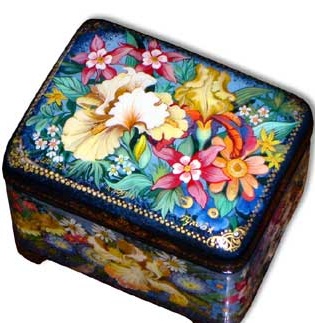Stages of making a casket:
- The main types of products
- Necessary equipment
- Materials for making papier-mâché
- Winding and gluing blanks of the body
- Pressure testing and drying
- Workpiece boiling
- Filing
- Hardware fittings
- Casket decarning
Winding and gluing blanks of the body
The cardboard is cut into strips a little less than the height of the "blockhead" and "cheeks" (12-15 cm). Stripes of cardboard are laid out on a table covered with oilcloth. Given the thickness of the cardboard, calculate the number of turns per wall thickness of the workpiece. If the thickness of the cardboard is 10 mm, then for the wall of the product with a thickness of 6 mm, seven turns should be made (we make an allowance for further processing). The first winding is lubricated with a kleister on one side only, so that the entire winding package does not adhere to the "blockhead". Subsequent strips are lubricated with paste on both sides. The edge of the strip is trimmed to nothing so that a scar does not form on the inside of the workpiece. The block is rolled onto the strip with a slight interference until the layer adheres completely to the layer. The last top coat must be left dry to prevent it from sticking to the crimp. At the same time, flat parts are separately glued together - plates, from which the bottoms and lids of the boxes will be cut out. Their thickness is also determined by the size of the product and the number of gluing layers.
